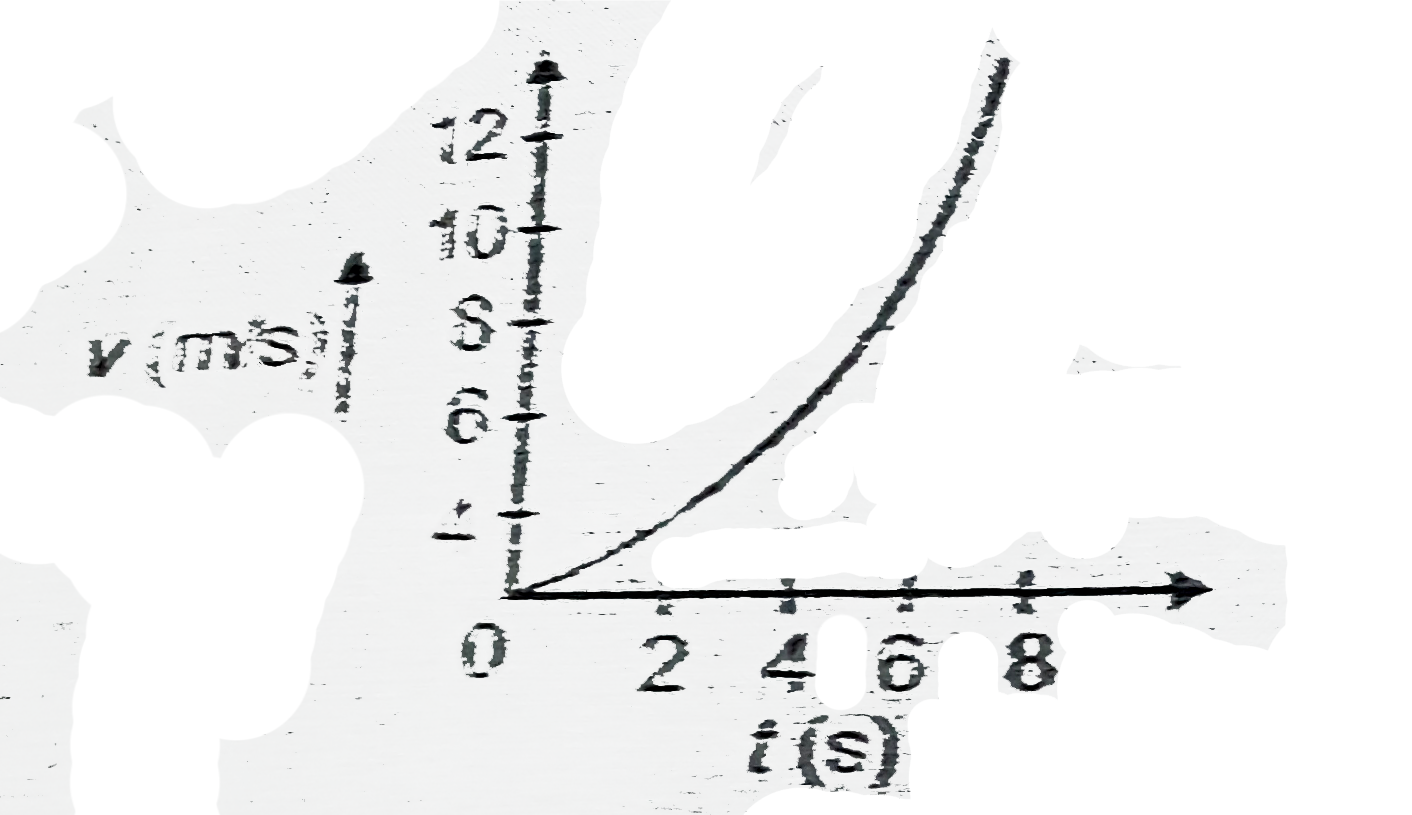Starting from a stationary position , Rahul paddles his bicycle to attain a velocity of 6m/s in 30s. Then he applies brakes such that the velocity of bicycle comes down to 4m/s in the next 5s . Calculate the acceleration of the bicycle in both the cases.
In the first case :
Initial velocity , u=0,
Final velocity, v=6ms−1 ,
time , t=30s
From eq. (8.3), we have
a=v−ut
Substituting the given values of the v,u and t in the above equation , we get
a=(6ms−1−0ms−1)30s
=0.2ms−2
In the second case :
Initial velocity , u=6ms−1 ,
time , t=5 s .
Then , a=(4ms−1−6ms−1)5s
=0.4ms−2
The acceleration of the bicycle in the first case is 0.2ms−2 and in the second case, it is −0.4ms−2.
Topper's Solved these Questions
Similar Questions
The velocity-time graph of an object is given below. Calculate the average acceleration of the object in the time interval of 4 s to 6 s.

View SolutionA particle starting from rest attains a velocity of 50ms−1 in 5 s. The acceleration of the particle is
View SolutionIf velocity of flow is 4 m/s, then velocity head is
View SolutionA train moving with a velocity of 20 m s−1' is brought to rest by applying brakes in 5 s. Calculate the retardation.
View SolutionAn object describes 225 m in the first 3s and 400 m in the next 2s.Calculate the velocity after 5s.From the start.
View SolutionA body is moving with velocity 30m/s towards east. After 10s its velocity becomes 40m/s towards north. The average acceleration of the body is.
View SolutionA body is moving with velocity 30m/s towards east. After 10s its velocity becomes 40m/s towards north. The average acceleration of the body is.
View SolutionA boy swims in a 100 m long pool. He covers 60 m with a velocity of 20 m/s and covers the rest of the distance with a velocity of 10 m/s. Calculate the average velocity of the boy.
View SolutionAn object of mass 100kg is accelerated uniformly from a velocity of 5m/s to 8m/s in 6s. Calculate the initial and final momentum of the object. Also, find the magnitude of the force exerted on the object.
View SolutionA body moving with uniform acceleration travels 84 m in the first 6 s and 180 m in the next 5 s. Find : (a) the initial velocity, and (b) the acceleration of the body.
View Solution
